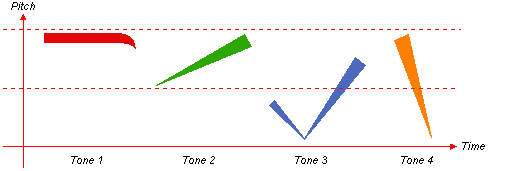佛 教 Fó jiào Buddhism 法 门 fǎ mén gate to enlightment (Buddhism) / Buddhism / way / method / (old) south gate of a palace 佛 门 Fó mén Buddhism 佛 家 Fó jiā Buddhism / Buddhist 佛 Fó Buddha / Buddhism (abbr. for 佛陀[Fo2tuo2]) 释 to explain / to release / Buddha (abbr. for 釋迦牟尼|释迦牟尼[Shi4 jia1 mou2 ni2]) / Buddhism 竺 Zhú surname Zhu / abbr. for 天竺[Tian1zhu2], India (esp. in Tang or Buddhist context) / (archaic) Buddhism 竺 教 Zhú jiào Buddhism (archaic) 释 教 Shì jiào Buddhism 释 家 Shì jiā Buddhism / a Buddhist 修 行 xiū xíng to devote oneself to spiritual development (esp. Buddhism or Daoism) / to devote oneself to perfecting one's art or craft 外 教 wài jiào foreign teacher (abbr. for 外國教師|外国教师) / greenhorn / novice / amateurish / religion other than Buddhism (term used by Buddhists) 喇 嘛 lǎ ma lama, spiritual teacher in Tibetan Buddhism 峨 眉 山 E2 méi Shān Mount Emei in Sichuan, one of the four sacred mountains of Chinese Buddhism 大 乘 Dà shèng Mahayana, the Great Vehicle / Buddhism based on the Mayahana sutras, as spread to Central Asia, China and beyond / also pr. [Da4 cheng2] 罗 刹 luó chà demon in Buddhism / poltergeist in temple that plays tricks on monks and has a taste for their food 禅 宗 Chán zōng Zen Buddhism 藏 传 佛 教 Zàng chuán Fó jiào Tibetan Buddhism 转 轮 zhuàn lún rotating disk / wheel / rotor / cycle of reincarnation in Buddhism 信 佛 xìn Fó to believe in Buddhism 法 轮 Fǎ lún the Eternal Wheel of life in Buddhism 小 乘 Xiǎo chéng Hinayana, the Lesser Vehicle / Buddhism in India before the Mayahana sutras 小 乘 Xiǎo shèng Hinayana, the Lesser Vehicle / Buddhism in India before the Mayahana sutras / also pr. [Xiao3 cheng2] 善 男 信 女 shàn nán xìn nu:3 lay practitioners of Buddhism 天 台 山 Tiān tāi Shān Mt Tiantai near Shaoxing 紹興|绍兴[Shao4 xing1] in Zhejiang, the center of Tiantai Buddhism 天台宗[Tian1 tai2 zong1] 大 昭 寺 Dà zhāo sì Jokhang, main Buddhist temple in Lhasa, a sacred place of Tibetan Buddhism 黄 教 Huáng jiào Yellow hat or Gelugpa school of Tibetan Buddhism / also written 格魯派|格鲁派[Ge2 lu3 pai4] 鉴 真 Jiàn zhēn Jianzhen or Ganjin (688-763), Tang dynastic Buddhist monk, who crossed to Japan after several unsuccessful attempts, influential in Japanese Buddhism 喇 嘛 教 Lǎ ma jiào Lamaism / Tibetan Buddhism 格 鲁 派 Gé lǔ pài Gelugpa school of Tibetan Buddhism 喇 嘛 庙 lǎ ma miào lamasery / temple of Tibetan Buddhism 三 宝 sān bǎo the Three Precious Treasures of Buddhism, namely: the Buddha 佛, the Dharma 法 / (his teaching), and the Sangha 僧 / (his monastic order) 天 台 Tiān tāi Mt Tiantai near Shaoxing 紹興|绍兴 / in Zhejiang, the center of Tiantai Buddhism 天台宗 / Tiantai county in Taizhou 台州[Tai1 zhou1], Zhejiang 摩 揭 陀 Mó jiē tuó Magadha, ancient India kingdom reported to be the birthplace of Buddhism 卍 swastika, a sacred and auspicious symbol in Hinduism, Buddhism, and Jainism 释 迦 牟 尼 佛 Shì jiā móu ní fó Sakyamuni Buddha (Sanskrit: sage of the Sakya) / Siddhartha Gautama (563-485 BC), the historical Buddha and founder of Buddhism 上 座 部 shàng zuò bù Theravada school of Buddhism 五 灯 会 元 Wǔ dēng Huì yuán Song Dynasty History of Zen Buddhism in China (1252), 20 scrolls 人 间 佛 教 Rén jiān Fó jiào Humanistic Buddhism 噶 当 派 Gá dāng pài Bkar-dgam-pa sect of Tibetan Buddhism 四 大 佛 教 名 山 Sì dà Fó jiào Míng shān Four Sacred Mountains of Buddhism, namely: Mt Wutai 五臺山|五台山 / in Shanxi, Mt Emei 峨眉山 / in Sichuan, Mt Jiuhua 九華山|九华山 / in Anhui, Mt Potala 普陀山 / in Zhejiang 天 台 宗 Tiān tái zōng Tiantai school of Buddhism 密 教 mì jiào esoteric Buddhism 智 顗 Zhì yǐ Zhiyi (538-597), founder of the Tiantai sect of Buddhism 法 相 宗 Fǎ xiàng zōng Yogācāra school of Buddhism / Dharma-character school of Buddhism 生 愿 shēng yuàn desire to exist (in Buddhism, tanhā) / craving for rebirth 禅 门 五 宗 chán mén wǔ zōng the five schools of Chan Buddhism 圣 德 太 子 Shèng dé Tài zǐ Prince Shōtoku Taiji (574-621), major Japanese statesman and reformer of the Asuka period 飛鳥時代|飞鸟时代[Fei1 niao3 Shi2 dai4], proponent of state Buddhism, portrayed as Buddhist saint 脉 轮 学 说 mài lún xué shuō theory of Chakra in Indian yoga and Tibetan Buddhism 脉 轮 理 论 mài lún lǐ lùn theory of Chakra in Indian yoga and Tibetan Buddhism 蓝 毗 尼 Lán pí ní Lumbini, Nepal, birthplace of Siddhartha Gautama 釋迦牟尼|释迦牟尼[Shi4 jia1 mou2 ni2] founder of Buddhism (also written 嵐毘尼|岚毗尼[Lan2 pi2 ni2], 臘伐尼|腊伐尼[La4 fa2 ni2], 林微尼[Lin2 wei1 ni2]) 迦 持 jiā chí the laws of the Buddhism 释 迦 佛 shì jiā fó Sakyamuni Buddha (Sanskrit: sage of the Sakya) / Siddhartha Gautama (563-485 BC), the historical Buddha and founder of Buddhism 鉴 真 和 尚 Jiàn zhēn hé shang Jianzhen or Ganjin (688-763), Tang Buddhist monk, who crossed to Japan after several unsuccessful attempts, influential in Japanese Buddhism 雪 山 狮 子 xuě shān shī zi Snow lion, mythological animal, a banned symbol of Tibet and Tibetan Buddhism 斋 教 Zhāi jiào Zhaijiao sect of Buddhism 卐 swastika, a sacred and auspicious symbol in Hinduism, Buddhism, and Jainism, later adopted by Nazi Germany 净 土 宗 Jìng tǔ zōng Pure Land Buddhism 真 言 宗 Zhēn yán zōng Shingon Buddhism 慧 能 Huì néng Huineng (638-713), the Sixth Patriarch of Chan Buddhism 俱 舍 宗 Jù shè zōng Kusha-shū / (Japanese Buddhism school) 唯 识 宗 Wéi shí zōng Yogachara school of Buddhism ("consciousness only" school of Buddhism) 悉 达 多 Xī dá duō Siddhartha Gautama (563-485 BC), the historical Buddha and founder of Buddhism 成 实 宗 Chéng shí zōng Satyasiddhi school of Buddhism 东 密 Dōng mì Japanese Esoteric Buddhism 智 𫖮 Zhì yǐ Zhiyi (538-597), founder of the Tiantai sect of Buddhism 大 般 涅 槃 经 Dà Bān niè pán Jīng (Buddhism) Mahāyāna Mahāparinirvāṇa Sūtra, aka the Nirvana Sutra, of which two major Chinese translations are extant, influential in the development of East Asian Buddhism









 shì
shì

































 wàn
wàn





















 wàn
wàn















